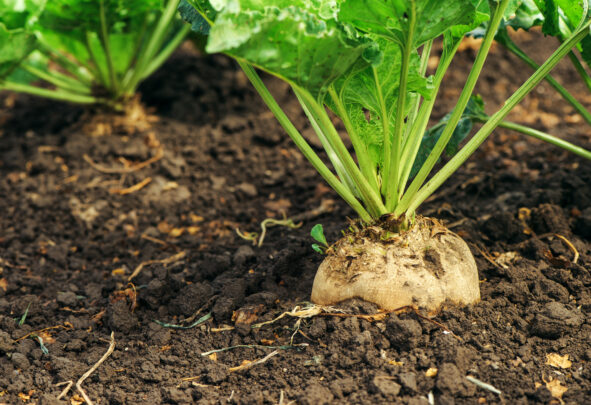Here we break down the sugar production life cycle, from growing sugar cane and sugar beet, to farming, extraction and processing.
In this Sugar Series article, Czarnikow’s Market Analysis experts decrypt an industry myth around sugar and beet sugar.
It is a common misconception that all sugar is produced from sugar cane. In fact, sugar is naturally produced in both sugar cane and sugar beet. In this article, we will explore how sugar is made from sugar beet. To find out more about the stages of the sugar production lifecycle, visit our guide ‘what is sugar‘.
How is Sugar Made?
Sugar is made using two key crops; sugar beet and sugar cane. These crops are grown in different regions across the globe, according to their climate, which dictates which crop is grown.
What is Sugar Beet?
Sugar beet is a white, parsnip-like taproot which makes sugar through the process of photosynthesis in its leaves, then stored in its root. It has a content of about 16% sugar, and goes through an extraction process that separates the sugar from the plant. Unlike sugar cane, sugar beet can grow in temperate climates, and is therefore a more popular alternative to cane in Europe and North America.
Discovery of Sugar Beet
16th-century scientist Olivier de Serres first alluded to the existence of sugar beet, as he stated ‘The beet-root, when being boiled, yields a juice similar to syrup of sugar, which is beautiful to look at on account of its vermilion colour’. The beet he referred to is actually a common red beet, like the one you might find in a hearty winter salad. For this reason, it didn’t taste as good as the already well-established crystallised cane sugar.
It wasn’t until the 18th century when Frederick II of Prussia subsidised experiments to find alternative sources of sugar, other than the expensive and exclusive sugar cane. In 1747, Andreas Sigismund Marggraf, professor of physics at the Academy of Science of Berlin found the existence of sugar in the white beet. Despite being able to extract pure sugar, its commercialisation didn’t take off until 1801, when Marggraf’s student, Franz Karl Achard opened the world’s first sugar beet factory in Silesia.
A certain Napoleon Bonaparte became very interested in Achard’s work, and appointed scientists to go to Silesia and investigate the factory. They returned and constructed two similar factories near Paris. Western Europe soon cottoned on to Napoleon’s sugar schemes and the European sugar beet industry developed rapidly. In the 1850’s, many European governments subsidised the production of sugar beet, an industry protection that crushed the sugar cane refining industry, particularly in Great Britain. However, during the Great War, many of the beet fields across Europe were destroyed and the refining of sugar cane in Europe was revived, and to this day, competition remains rife between the sugar cane and sugar beet in Europe and North America.
In Britain specifically, the first sugar beet crops were farmed and processed in Norfolk over 100 years ago, with the British home-grown sugar industry now involving many thousands of growers.
Farming of Sugar Beet
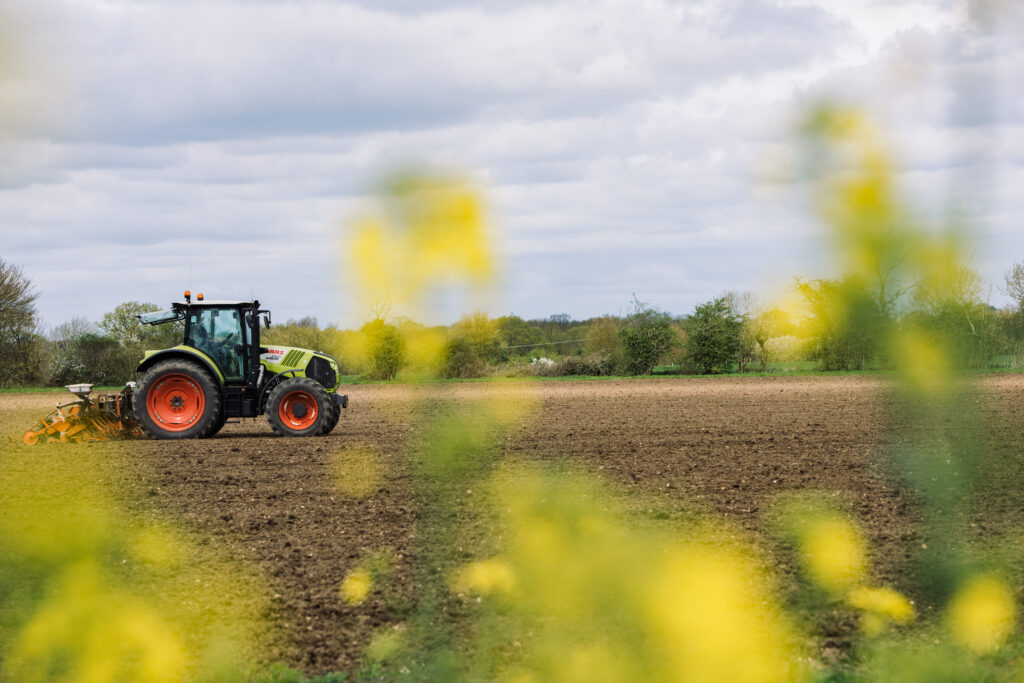
Sugar beet is a popular among farmers because it is a good rotation crop. It is important to rotate the crop grown on a particular field from year to year, in order to maintain soil quality and prevent pests and diseases. Beet is often used as the ‘break’ crop that is planted in-between rotations. It helps to give the soil a rest from the pests and weeds that infect other crops, purifying the soil for the subsequent crop. The beet’s leaves are cut off in the harvesting process, leaving important nutrients on the land as they naturally decompose.
From sowing to harvest, sugar beet can take up to a year to be ready for processing. Managing the soil is important to sugar beet farmers, with many planting a cover crop such as barley alongside the beet crop in order to protect it from the elements. The beet grows substantially, from tiny seed to large plant with a big root. In order to protect the beet during its development process, it is imperative that farmers look out for weeds that may threaten the growth of the beet. Once the beet is fully grown, it is ready for harvesting.
Looking to buy, sell or move sugar?
Harvesting of Sugar Beet
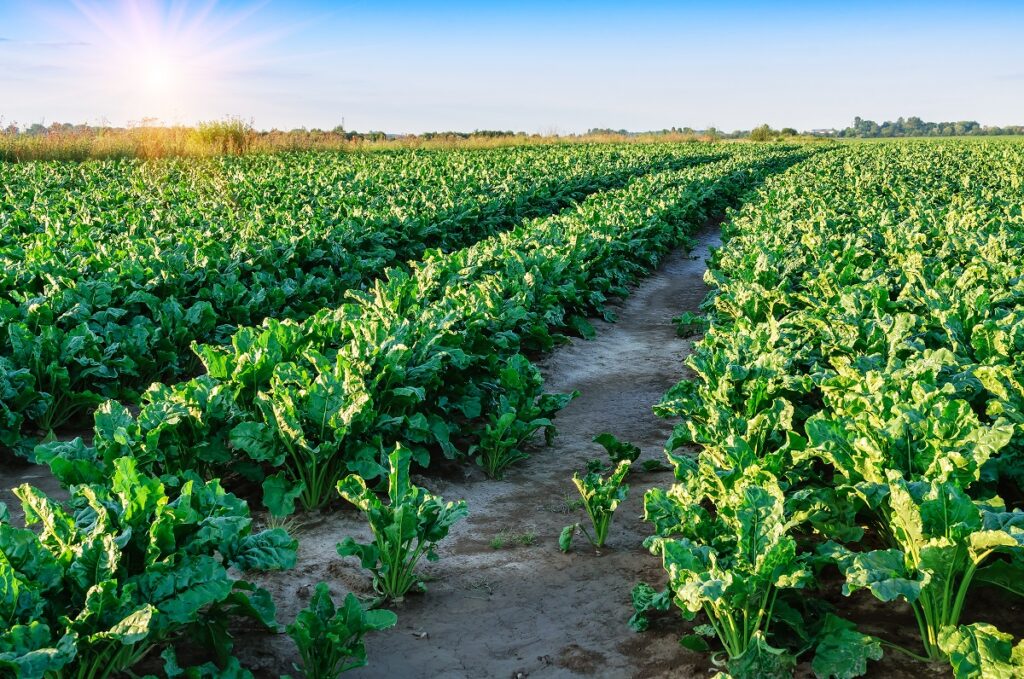
Sugar Beet is harvested during Autumn and Winter, where a rotor beater cuts off or ‘tops’ the head of the beet, which is then left in the field. A beet loader then pulls the beets put of the earth and into a truck, where the beet is driven via truck to a processing plant.
Sugar Beet Processing
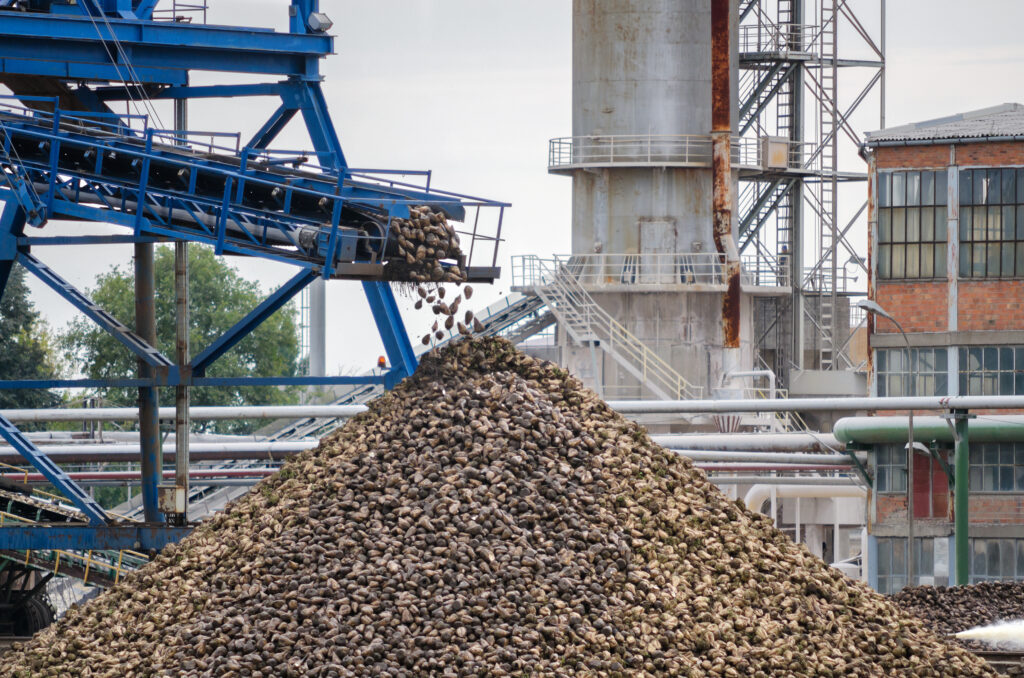
Upon arrival at the processing plant, the beet is tested for quality and sucrose content. It is then placed on conveyer belts that transport the beet to a revolving drum showered with water, where rocks and gravel are separated and sink. This is a very important step as beet grows in the ground and is therefore much dirtier than sugar cane when it arrives in the factory. The stones are then sold to landscapers or road builders as a by-product. The beets are then washed in a beet washer which cleans all the excess soil, while a magnet removes the metal fragments. The clean beets roll down towards the slicers, where they are sliced into ‘cossettes’ that look like small French fries. This opens the beet up, increasing the surface area and allowing the sugar to be more easily extracted.
The beet strips go into a large hot water tank where they are soaked to begin to break their cell membranes, allowing the sucrose to be extracted by osmosis. This occurs because the cossettes of beet have a higher sucrose content than the water surrounding them, making the sucrose diffuse into the water. At this stage, a brown sugary pulp is formed, entering into a diffusion chamber that extracts as much sugar as possible from the cossettes by running them up against the flow of water. Then, the sugary liquid (raw juice) is ready for purification. The non-sugary pulp is pressed to remove any excess juice. It is then dried to form pellets which are sold as animal feed – a further by-product of the refining process.
Sugar Syrup
The sugar syrup, or ‘raw juice’ is moved on to the purification process, where impurities are removed by adding milk of lime and carbon dioxide. During this process (carbonation) the C02 and milk of lime combine to produce calcium carbonate, collecting the non-sugars. This precipitates out, clearing most of the impurities as it leaves the sugar juice. Some processors also add de-colouring ionic exchangers to decolourise the liquid.
Then, the residual juice is put through another filtration process using a frame or plate press. Pressure enables the sugar juice to be squeezed out, resulting in thin juice and solid waste. The waste, which is called lime solids and holds all the impurities, is then spread onto the farmland, enabling a further sustainable by-product: fertilizer.
The resulting ‘thin juice’, although much purer than the raw juice, has a relatively low sugar content. In order to increase the content, the thin juice is boiled to increase the sugar solids’ content from 16% to 65%. The syrup then goes through a 6 step evaporation process where the water boils off, leaving a thicker liquid.
The remaining ‘thick juice’ then goes through the crystallisation process. It is important to note that the water used in the process up until this point is then kept for further heating and use on-site, reducing waste and managing resources and energy efficiently.
Sugar Crystallisation
The thick juice then goes through a 4 stage crystallisation process, the first of which passes it through a centrifuge (pressurised vacuum system) at a low temperature, where seed crystals are added, allowing sugar crystals begin to form and grow by using a complex cooling and evaporating process. The crystal sugar, now with a fudge consistency, is put in centrifuges to separate the mixture into liquids and crystals three times. The fudge-like by-product that remains after the maximum amount of sugar crystals have been extracted is called beet molasses, and is used to manufacture animal feed or distilled into alcohol.
The sugar crystals are then dried with hot air and gathered, packaged and distributed to consumers. And there we have it! The journey of sugar beet from seed to sugar.
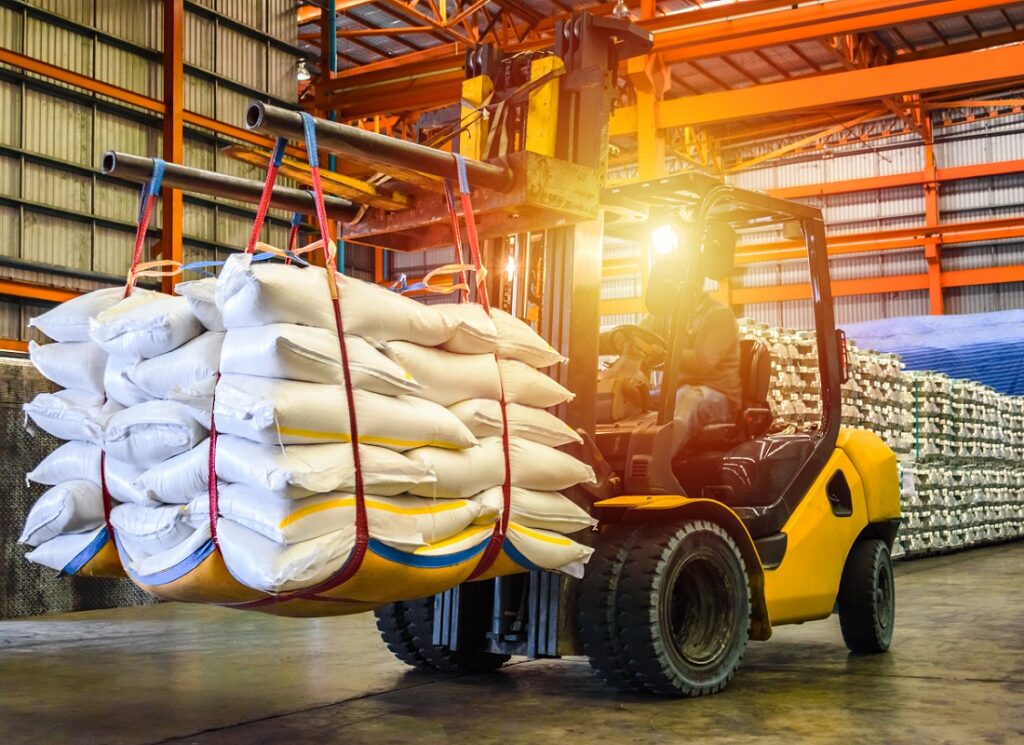
To find out more about sugar beet, or our other products, please get in touch today.
